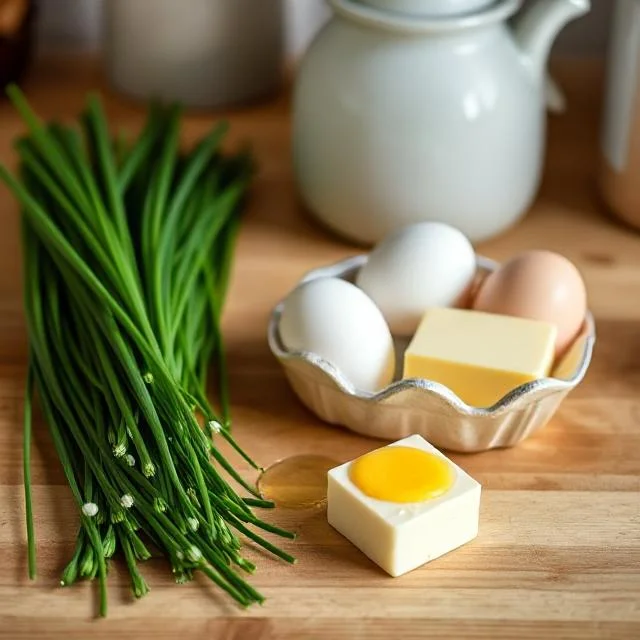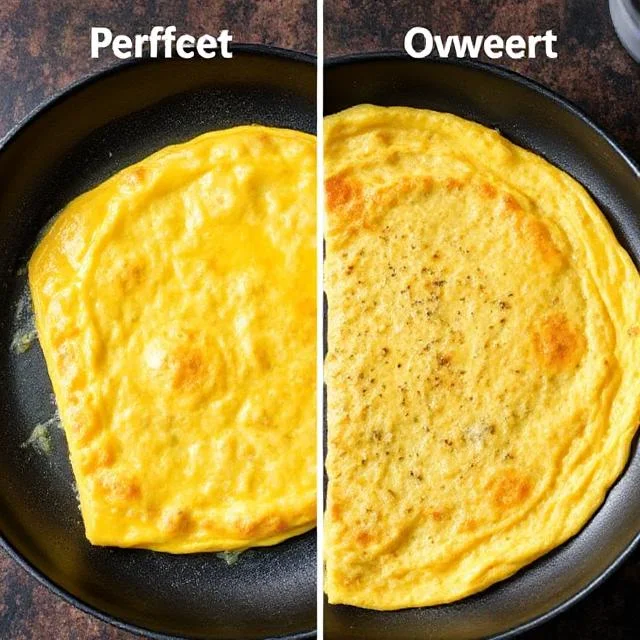Introduction
A classic French omelette is a light, fluffy, and buttery dish that showcases the beauty of simple ingredients. Unlike American-style omelets, which are often filled and folded, a French omelette is smooth, custardy, and rolled to perfection. Mastering this dish requires just a few key techniques, but the results are well worth it. In this guide, we’ll take you through each step, from choosing the right eggs to perfecting the final roll.
Choosing the Right Ingredients for French Omelette
A French omelette relies on high-quality, fresh ingredients. Here’s what you need to know before you start cooking.
Selecting the Best Eggs for a Perfect French Omelette
- Freshness Matters: Fresh eggs have firmer whites and richer yolks, leading to a better texture.
- Organic vs. Conventional: Organic, pasture-raised eggs tend to have deeper flavor and a more vibrant color.
- Room Temperature Eggs: Using eggs at room temperature helps them cook more evenly.
The Role of Butter in a French Omelette
- Unsalted Butter: Gives better control over seasoning.
- European Butter: Higher fat content adds richness.
- Melting and Coating: Butter should be melted gently to prevent burning.
Choosing the Right Pan
- Nonstick Pan: Prevents sticking and ensures smooth rolling.
- Size Matters: An 8- or 9-inch pan is ideal for a 2- or 3-egg omelette.
- Even Heat Distribution: A well-made pan prevents uneven cooking.
Seasoning and Fillings (If Any)
- Classic Simplicity: Salt and white pepper enhance natural egg flavor.
- Optional Herbs: Chives, parsley, or tarragon for extra freshness.
- Minimal Fillings: If using cheese, use a mild option like Gruyère or Boursin.

Fresh eggs, butter, and chives on a wooden kitchen counter.
Step-by-Step Guide to Making a French Omelette
Follow these precise steps to achieve the perfect texture and taste.
Preparing the Eggs
- Whisking Properly: Use a fork or whisk to beat eggs until uniform in color and slightly frothy.
- Straining (Optional): Straining eggs removes chalazae for an ultra-smooth consistency.
- Seasoning at the Right Time: Add salt just before cooking to prevent watery eggs.
Heating the Pan and Melting the Butter for a Perfect French Omelette
- Medium-Low Heat: Ensures gentle cooking without browning.
- Butter Swirl Technique: Coat the entire pan to prevent sticking.
- Avoid Overheating: The butter should foam but not sizzle.
Cooking and Stirring for a Soft Texture
- Continuous Stirring: Use a spatula to create small curds.
- Shaking the Pan: Helps distribute uncooked eggs evenly.
- The Right Consistency: Eggs should be just set, still soft, and creamy.
Rolling the Omelette
- Loosening the Edges: Use a spatula to lift the sides.
- Folding in Thirds: Gently roll the omelette away from you.
- Final Touch: Tilt the pan to complete the roll, then slide onto a plate.

A classic French omelette being rolled in a nonstick pan.
Common French Omelette Mistakes to Avoid
Even experienced cooks make mistakes. Here’s what to watch for.
Overcooking the Eggs
- Low Heat is Key: Avoid browning or rubbery texture.
- Residual Heat: The omelette continues cooking off the heat.
Using the Wrong Pan
- Nonstick is Essential: Stainless steel can cause sticking.
- Check Your Coating: A scratched nonstick pan won’t work well.
Skipping the Stirring Process
- Frequent Stirring: Creates small curds for a smooth omelette.
- Not Too Fast: Stir gently to maintain creaminess.
Adding Too Many Fillings
- Keep It Minimal: Overstuffing prevents proper rolling.
- Cheese Timing: Add cheese right before rolling.

A side-by-side comparison of a perfect vs. overcooked French omelette
French Omelette Variations and Serving Suggestions
While a classic French omelette is simple, you can customize it to your liking.
Cheese Variations
- Gruyère: Melts smoothly and enhances creaminess.
- Goat Cheese: Adds tanginess and depth.
- Comté: Offers a nutty, buttery taste.
Herb-Infused Omelettes
- Chives: The most traditional herb for a French omelette.
- Tarragon: Delivers a subtle anise flavor.
- Parsley or Basil: Fresh and aromatic options.
Side Dishes That Complement the Omelette
- Light Salad: Mixed greens with a lemon vinaigrette.
- Crusty Bread: A fresh baguette pairs beautifully.
- Sautéed Mushrooms: Earthy flavors complement the omelette’s richness.
Beverage Pairings
- Coffee or Espresso: The perfect French breakfast.
- White Wine: A crisp Sauvignon Blanc pairs well.
- Sparkling Water: Keeps the meal light and refreshing.

A plated French omelette served with a side of mixed greens and a fresh baguette
Conclusion
A classic French omelette is more than just a dish—it’s an art form. By using fresh ingredients, mastering the proper technique, and avoiding common pitfalls, you can create a smooth, custardy, and delicious omelette every time. Whether you keep it simple or add a touch of cheese and herbs, this timeless recipe is sure to impress. Now, grab your eggs and pan, and start cooking your perfect French omelette today!
Advice
To make a classic French omelette, whisk fresh eggs gently until just combined. Next, melt butter in a non-stick pan over medium-low heat. Pour in the eggs and swirl the pan. Stir the edges to allow uncooked eggs to flow. Once mostly set, fold the omelette and serve with fresh herbs for a creamy finish.

